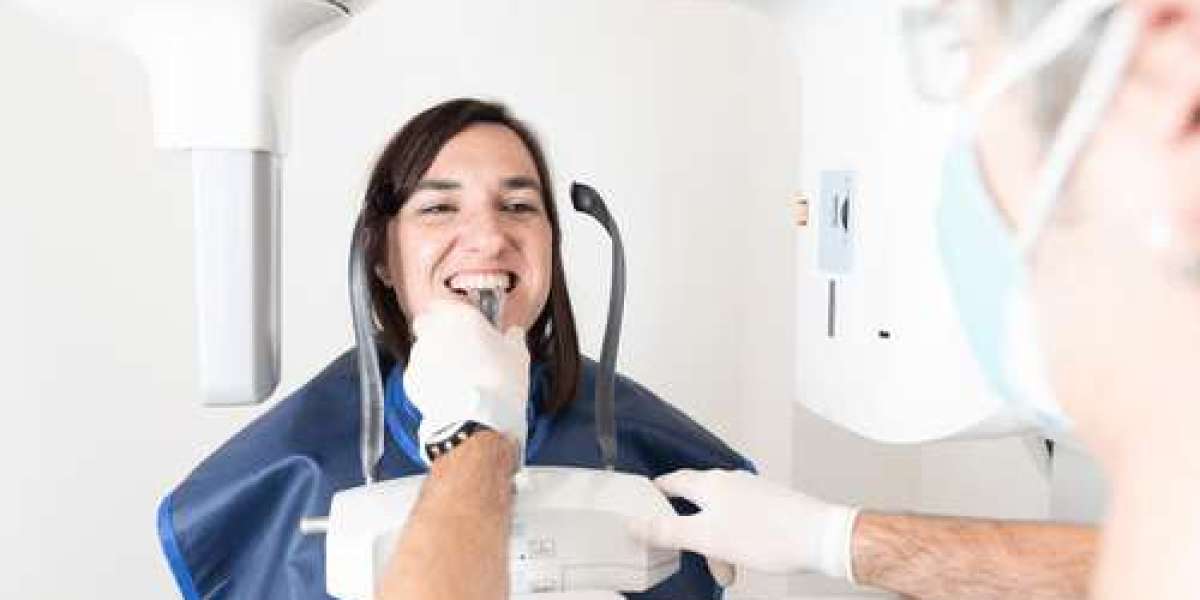In the field of dentistry, the evolution of imaging technology has dramatically improved how dental professionals diagnose and treat patients. Dental Panoramic X-Ray in Dubai has long been a staple in dental practices for providing a broad view of the teeth, jaw, and surrounding structures. However, with the rise of 3D imaging technologies, the future of dental diagnostics is rapidly moving beyond traditional panoramic X-rays. 3D imaging offers a more detailed and accurate view of the oral anatomy, allowing dentists to gain a deeper understanding of a patient’s dental health. In this article, we will explore the differences between traditional panoramic X-rays and the emerging technology of 3D imaging, along with what the future of dental imaging may look like.
The Basics of Dental Panoramic X-Rays:
Panoramic X-rays, also known as orthopantomograms, are a valuable tool in dental diagnostics. These X-rays provide a wide, single image that captures the entire mouth, including the teeth, jawbones, and surrounding structures. The primary advantage of panoramic X-rays is their ability to give dentists a comprehensive view of the mouth in one single image, which is essential for detecting issues such as cavities, bone loss, and impacted teeth. However, the main limitation of panoramic X-rays lies in the level of detail they provide. While they offer a broad view, they lack the depth and precision needed for more complex diagnoses, particularly in cases involving the teeth’s internal structures or intricate jaw problems.
The Limitations of 2D Panoramic X-Rays:
Although panoramic X-rays have been a reliable diagnostic tool for many years, they are still a two-dimensional representation of a three-dimensional object. This means that important details, such as the precise position of teeth and structures, can be missed or misinterpreted. For example, overlapping teeth in a 2D X-ray can make it difficult to determine whether there is an issue with the tooth's roots or bone structure. Additionally, panoramic X-rays can sometimes fail to capture certain problems within the jawbone or surrounding soft tissues. These limitations have paved the way for the development of 3D imaging technologies, which offer a much more detailed and accurate perspective.
The Rise of 3D Imaging in Dentistry:
3D imaging technology, also known as cone beam computed tomography (CBCT), has revolutionized dental diagnostics by providing a detailed three-dimensional view of the oral and maxillofacial structures. Unlike panoramic X-rays, 3D imaging offers multiple slices of data that can be viewed from any angle, providing a complete, accurate, and detailed picture of the teeth, bone structures, and soft tissues. This advanced imaging technology enables dentists to assess the position of teeth, detect infections, plan treatments for dental implants, and even evaluate bone density in a way that panoramic X-rays cannot match.
Key Advantages of 3D Imaging Over Panoramic X-Rays:
One of the most significant advantages of 3D imaging over traditional panoramic X-rays is the level of detail it provides. With CBCT, dentists can examine the teeth, jaws, and surrounding tissues in three dimensions, which helps to identify problems that might not be visible in 2D images. This is especially useful for complex procedures such as dental implant placement, where precision is critical. Additionally, 3D imaging allows for better visualization of the bone structure, helping dentists to assess bone density and determine whether the jaw has enough support for implants. For patients in Dental Panoramic X-Ray in Dubai, 3D imaging is quickly becoming an essential tool for advanced diagnostics and treatment planning.
Enhanced Diagnostic Accuracy with 3D Imaging:
The enhanced diagnostic capabilities of 3D imaging are a game changer for many dental procedures. For example, dentists can use 3D scans to detect early signs of issues such as tumors, cysts, and abscesses that may not be visible in traditional 2D X-rays. This level of accuracy allows for earlier intervention, potentially preventing more severe complications down the road. Additionally, 3D imaging provides clear, precise information that can help in planning complex dental surgeries. Whether it's assessing the positioning of impacted wisdom teeth, planning for orthodontic treatments, or evaluating the need for bone grafts, 3D imaging ensures a higher degree of accuracy and success.
3D Imaging in Implantology:
One of the most significant applications of 3D imaging technology is in dental implantology. The success of dental implants relies heavily on the precise placement of the implant into the jawbone. 3D imaging allows dentists to visualize the bone structure in three dimensions, ensuring that implants are placed in the most optimal position. By examining the bone density and the proximity of vital structures such as nerves and blood vessels, dentists can avoid complications during surgery. This level of detail also helps in planning the precise angle and depth of the implant, improving the chances of a successful outcome. For patients considering dental implants in Dental Panoramic X-Ray in Dubai, 3D imaging offers the most advanced and reliable way to ensure a successful procedure.
The Role of 3D Imaging in Orthodontics:
In orthodontics, 3D imaging is changing the way dentists plan and monitor treatments. Traditional panoramic X-rays provide a limited view of the teeth and jaw, which can make it difficult to assess alignment issues or predict the movement of teeth. However, 3D imaging allows orthodontists to examine the teeth, jaw, and surrounding bone structures in detail. This helps in planning treatments such as braces or aligners with more precision. 3D scans also allow for better monitoring of treatment progress, helping orthodontists make adjustments as necessary for more effective results. The detailed data provided by 3D imaging makes it easier for patients to achieve optimal results, and the technology continues to improve the overall orthodontic treatment process.
The Future of Dental Imaging:
As dental imaging technology continues to evolve, the potential for more advanced and efficient diagnostic tools is limitless. One exciting development is the integration of artificial intelligence (AI) with 3D imaging systems. AI-powered software can analyze 3D images and provide automatic detection of anomalies, such as cavities, fractures, or signs of gum disease. This will make diagnostics faster and more accurate, reducing human error and allowing dentists to focus on providing the best treatment. Additionally, with advancements in portability, 3D imaging systems are becoming more compact and accessible, potentially revolutionizing the way dental care is provided in underserved areas.
Final Thoughts:
While Dental Panoramic X-Ray in Dubai remains a vital tool in dentistry, the future of dental imaging lies in 3D technology. The detailed, three-dimensional images provided by cone beam computed tomography offer dentists more precision, allowing for better treatment planning, improved outcomes, and an enhanced patient experience. From implantology to orthodontics, 3D imaging is transforming the way dental professionals diagnose and treat patients. As technology continues to advance, we can expect even greater innovations in dental imaging, leading to more accurate, efficient, and accessible care for patients worldwide.



